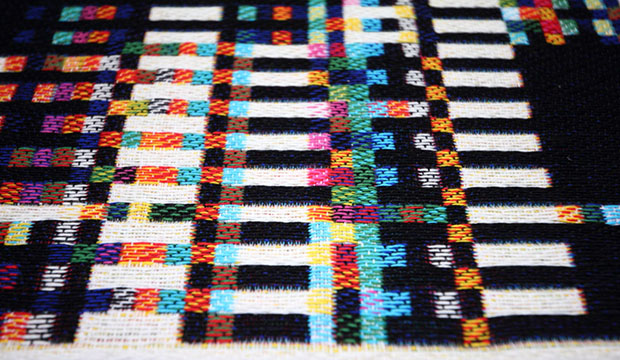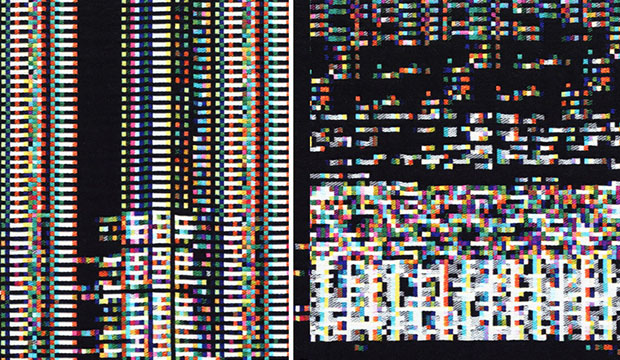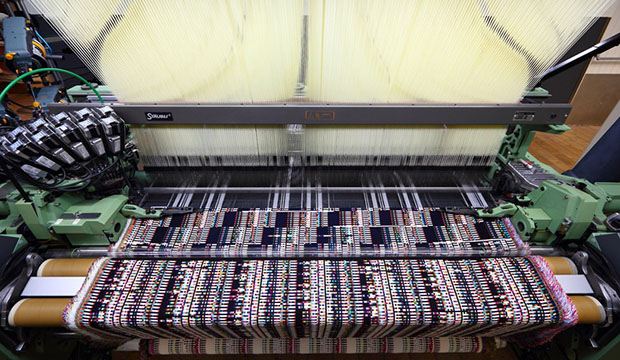

With “slow” and “handmade” currently being buzzwords in the fashion industry, the concept of “machine made” isn’t exactly very trendy right now. However, more designers are pairing creativity and responsible practices with technology to create truly special innovations within the industry.
One such person is Phillip Stearns of Glitch Textiles. Stearn’s fabrics are inspired by the intersection of hard and soft (referring to the physicality of machines and fabrics).
The knit and woven fabric designs are created using the data pulled and translated from various machines such as computers and digital cameras.

The resulting textiles are beautiful, abstract landscapes of color and texture.
To date, Stearn’s most well known and subsequently, perhaps most intriguing work, stems from a recent project titled Fragmented Memory. Three experimental tapestries were woven on a computerized Jacquard loom at the Audax Textielmuseum’s Textillab.
In Stearn’s words, “They are portraits of raw binary data, sourced from a computer’s physical memory.”
Essentially, he has taken binary code straight from a computer, and using color and weave structure, visually translated it into a textile pattern.

The results are so accurate; the woven pattern can be re-translated back to its original data form. A conversion key is located on the back of each piece.
In order to create these pieces, binary data in its basic state (code made up of 0’s and 1’s) was converted into an image using customized software for this specific purpose. The image can then be opened in the textile software NedGraphics, where a color palette and weave structure is created to mirror the original picture.
In this instance, eight colors were chosen to be woven in varying satin weaves. With this information translated into a textile design, a file is created for the loom, and the piece can be woven. The final look of these binary fabrics take on a bit of an eerie quality, as they bear a strange resemblance to TV or computer static.
Strange as it is, the imagery seems fitting for such a project.
